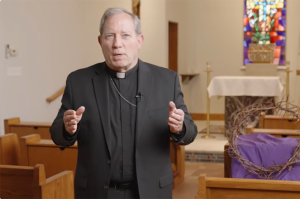Casey Anthony Trial: Death Penalty Off the Table Under New Fla. Law?
New ruling could be considered in high profile trial
After more than 33 days of testimony and 400 pieces of evidence, the Casey Anthony case could be in the hands of the jury in the next few days. The controversial trial has ironically coincided with a time when Florida is looking hard at its own death penalty laws.
Political analysts are debating whether a recent ruling about Florida’s system of imposing the death penalty will have an effect on the case, which is arguably one of the biggest trials in the nation.
Anthony, 25, has pleaded not guilty to first-degree murder in her two-year-old daughter Caylee's death and could get the death penalty if convicted of that charge.
In his 94-page ruling, U.S. District Judge Jose Martinez found that Florida's capital punishment rules are flawed.
In more legal terms, the Miami judge declared that the state’s death penalty is “unconstitutional because jurors are not required to make findings beyond a reasonable doubt on the aggravating factors that can increase a guilty defendant's sentence from life to death," the ruling stated.
“The defendant has no way of knowing whether or not the jury found the same aggravating factors as the judge," Martinez wrote in the ruling.
“Indeed, the judge, unaware of the aggravating factor or factors found by the jury, may find an aggravating circumstance that was not found by the jury.”
Martinez said the Florida Supreme Court has not found that the state’s method of imposing capital punishment violates the Constitution, even in light of the 2002 U.S. Supreme Court decision he is citing.
Whether or not Chief Judge Belvin Perry, who has been presiding over the Casey Anthony case for the past 33 days, will follow the new ruling is yet to be seen, but he could attempt to modify jury instructions to comply with the decision, according to legal analysts.
“What this means is that death penalty cases in Florida could be challenged because it addresses fairness,” said Rob Lowell, a defense attorney in Atlanta, Ga.
“Jurors who vote to convict a defendant of murder are asked to recommend life or death as their punishment. The judge tells the jury to give it ‘great weight’ but they do not have to do that. Judge Perry could bring in this new ruling and it will change the game for sure."
Lowell, who has been following the Casey Anthony case, told The Christian Post that although the judge’s decision applied to someone else, it implies a drastic change in the state's entire legal system.
“The judge made a decision that impacts whether a murder conviction gets life or death,” Lowell said.
“Basically, lawyers can cite the decision and it can be used to seek stays of execution.”
Legal analyst David Fussell discussed the jury instructions for the Casey Anthony Case in a recent interview with a local television station and explained how the recent ruling could eventually have an impact on sentencing should Casey Anthony be found guilty.
“In order for a jury to apply the law to the evidence, they must be told what the law is,” Fussell said.
“Right now in Florida, if a defendant like Casey Anthony is found guilty, the jury can recommend life or death in the sentencing phase. Ultimately, however, it's the judge who makes the final decision.”
He said the new ruling does not immediately affect the Casey Anthony trial, but it might have an impact in the future.
In this case, Casey Marie Anthony is accused of first-degree murder. Murder in the first degree includes the lesser crimes of murder in the second degree, murder in the third degree, and manslaughter, all of which are unlawful. A killing that is excusable or was committed by the use of justifiable deadly force is lawful.
There are two ways in which a person may be convicted of first-degree murder. One is known as premeditated murder, and the other is known as felony murder.
Dahlia Lithwick, a legal analyst for Day-to-Day magazine, said two-thirds of all Americans still support the idea of the death penalty for murderers.
“But as we're starting to really re-examine our hearts and consciences about which way is the best way to do it, the Supreme Court seems to be almost hardening in its sense,” she said.
“The court seems to be thinking maybe these procedures are okay and maybe we don't need to fix the system too much.”
The ruling by Judge Martinez states that Florida's sentencing system violates the 2002 U.S. Supreme Court's decision in the case of Ring v. Arizona.
In that case, judges were allowed to make the final sentencing choice between death and life, but requires that jurors first determine whether a defendant is eligible for the death penalty.
The ruling, which is now subject to appeal, was determined in the recent trial of Paul Evans, who may now get a new sentencing hearing. His murder conviction still stands.
Another development in Florida’s legal system this week shows the state’s attorney general is objecting to the new ruling saying “several key legal and factual errors that should force a reversal.”
The state wants Judge Martinez to change his opinion so that the sentencing system is preserved and also to deny a death row inmate a chance at a life sentence, said Assistant Attorney General Leslie Campbell in a statement.
"Because this ruling represents manifest errors of both fact and law, the state respectfully requests that this court alter or amend its judgment," Campbell wrote.
Attorney General Pam Bondi said in a statement that Florida will take the matter to the 11th U.S. Circuit Court of Appeals if Martinez does not change his ruling.
Did you know?
1- On March 30, 1998, Judias "Judy" Buenoano became the first woman to die in Florida's electric chair.
2- A Death Row cell is 6 x 9 x 9.5 feet high. Florida State Prison also has Death Watch cells to incarcerate inmates awaiting execution after the Governor signs a death warrant for them. A Death Watch cell is 12 x 7 x 8.5 feet high.
3- Men on Death Row are housed at Florida State Prison in Starke, Fla., and Union in Raiford, Fla. The women on Death Row are housed at Lowell Correctional Institution Annex in Lowell, Fla.
4- Death Row inmates are served meals three times a day: at 5:00 am, from 10:30 am to 11:00 am and from 4:00 pm to 4:30 pm. Food is prepared by prison staff and transported in insulated carts to the cells. Inmates are allowed plates and spoons to eat their meals. Prior to execution, an inmate may request a last meal. To avoid extravagance, the food to prepare the last meal must cost no more than $40 and must be purchased locally.
5- Death Row inmates are counted at least once an hour. They are escorted in handcuffs and wear them everywhere except in their cells, the exercise yard and the shower. They are in their cells at all times except for medical reasons, exercise, social or legal visits or media interviews. When a death warrant is signed the inmate is put under Death Watch status and is allowed a legal and social phone call.
These are the statistics of Florida inmates executed after the death penalty was reinstated, beginning with John Spenkelink’s execution in May 1979.
12.68 years is the average length of stay on Death Row prior to execution.
14.29 years is the average number of years between offense and execution.
44.41 years is the average age at time of execution.
30.13 years is the average age at offense for executed inmates.




























